“Life moves pretty fast. If you don’t stop and look around once in a while, you could miss it,” Ferris Bueller said on his famous day off back in the 1980s.
Life moves even faster in 2019, as transformational technologies like artificial intelligence, machine learning, and cloud computing gain traction. Though I’m not playing hooky today, I thought I’d at least take some time to explore the what, why, and how of data wrangling.
Data wrangling is like the 1961 Ferrari that Ferris “borrows” from his friend Cameron. Without that car, Ferris’s famous day off doesn’t take off. And without data wrangling, your artificial intelligence, machine learning, and cloud computing initiatives can stall out.
The What: Defining Data Wrangling
We all know working with data is challenging. More than 80% of time on any given data project can be spent getting data ready for use. Whether it’s accessing the correct data, exploring its contents, quality and completeness, or manipulating the data to its needed structure so that it be accurately analyzed or modeled for business purposes, each stage of the process presents a unique challenge. In today’s complex data environment, data wrangling can throw a wrench in any company’s data aspirations. The busy work of wrangling data can render data scientists, data engineers or data analysts as nothing more than glorified data janitors. But it doesn’t have to be this painful.
The Why: Supporting Data Wrangling for AI and the Cloud
For the last decade, companies have been trying to become more data driven, seeking to transition from simple, passive measurements of past results to agile and predictive data driven decisions. As the volume, variety, and complexity of data increases, organizations can no longer rely on legacy, siloed, IT-led data integration to handle the speed, scale and diversity of today’s data and demand for insight-driven action. New technologies and processes are needed if organizations are to take advantage of the transformational opportunities of artificial intelligence and cloud computing.
The How: Data Wrangling in Three Easy Steps with Designer Cloud
So, how do we solve this challenge that we are faced with? That’s where Designer Cloud comes in. Designer Cloud leverages decades of innovative research in human-computer interaction, scalable data management and machine learning to improve the ease, speed, and scale of exploring data, preparing data for use, and automating that work for continuous and repeatable value.
Let’s review these three steps of data wrangling and show you each step in action.
Step 1: Exploring
To understand how to prepare and refine your data for reporting, analytics, or machine learning, you have to first understand the contents of your data. Designer Cloud’s governed platform allows IT to manage the restrictions and security of data, while giving the business access to the data they need. Designer Cloud’s active profiling lets you assess column level distributions, data anomalies, patterns in data structures, and more. Seeing the contents of your data, and the effects of each change or manipulation guides you on how best to clean and prepare your data.
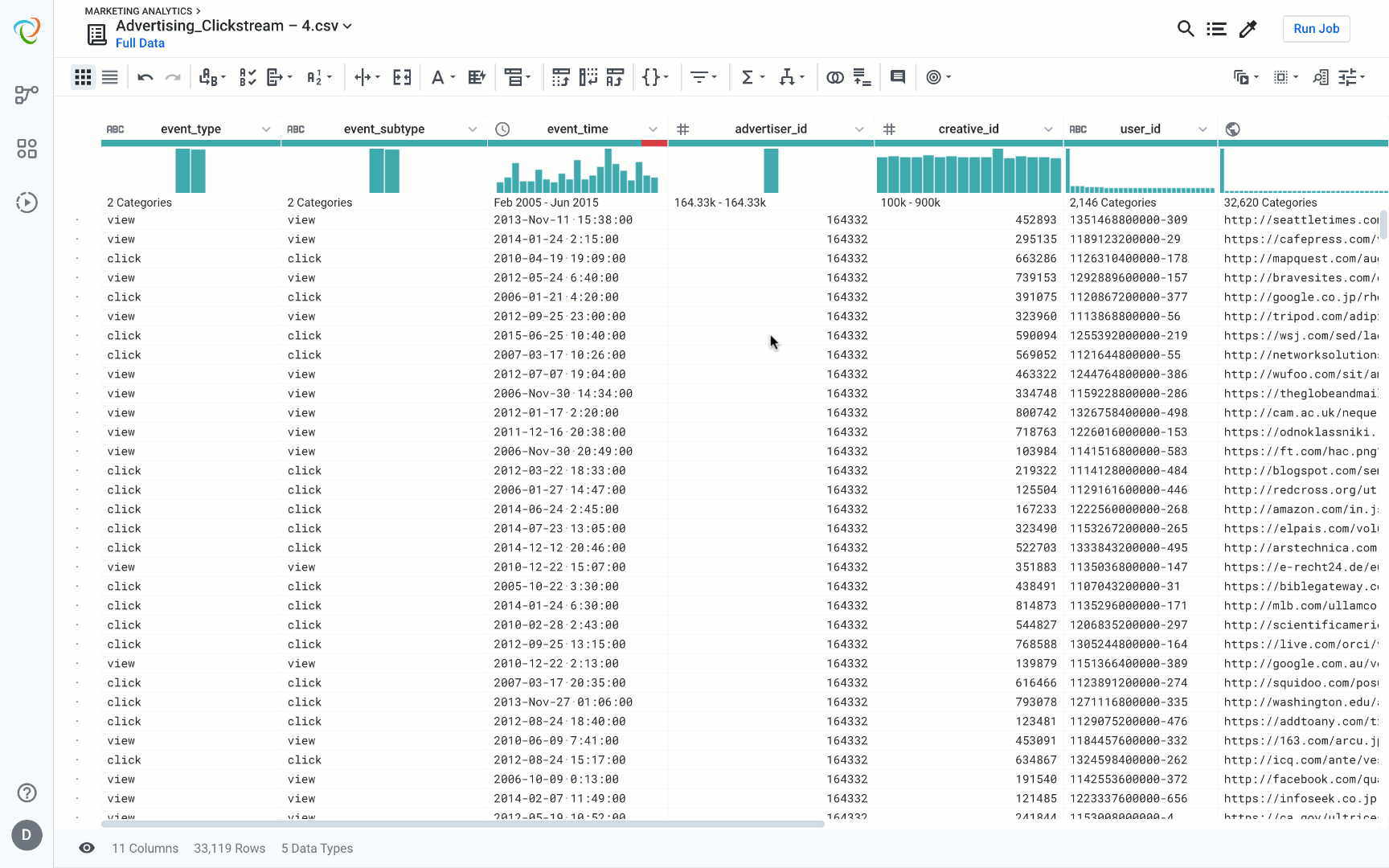
Step 2: Preparing
Preparing the data requires a number of different types of transformations, depending on the context. This can be broken down into Structuring, Cleaning, Enriching, and Shaping. The key to Designer Cloud’s ease and effectiveness is in the visual and interactive guidance, and the constant, real time validation of each of these transformations. This ensures data quality is front and center at all times.
Structuring
Since raw data comes in many shapes and sizes, you need to give it structure. This can mean creating columns and rows from particularly unstructured datasets, extracting important information, flattening arrays into individual rows or unnesting objects into separate columns. Designer Cloud makes it easy to work with all types of data, from free form text files to highly structured CSVs.
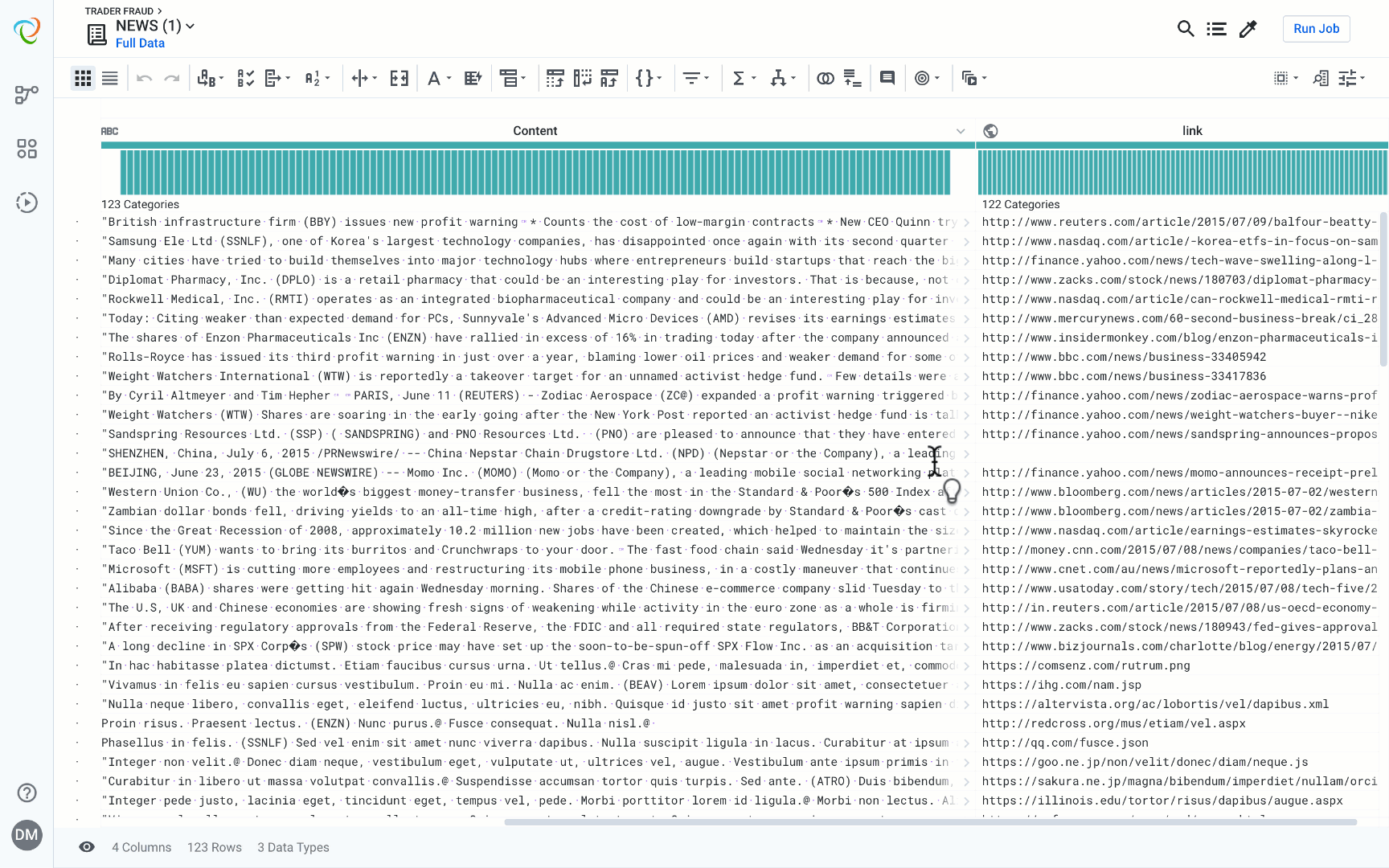
Cleaning
The last thing you want to do is automate bad decisions faster based on bad data. Designer Cloud’s interactive interface makes it easy to clean data—that is, detect and remediate data quality problems like anomalies, null values, and outliers, or replace unwanted values or patterns in columns.
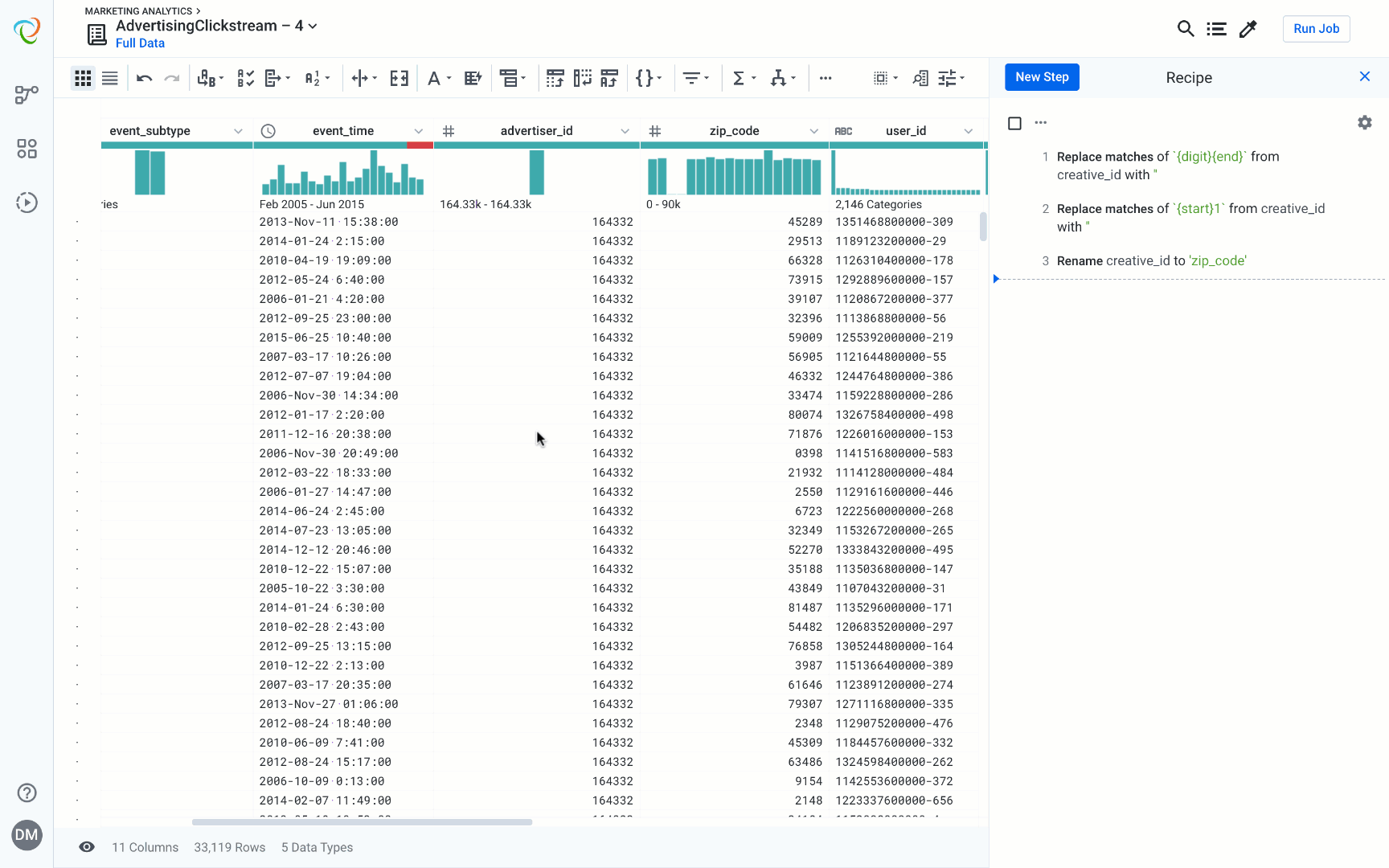
Enriching
Enriching data provides extra context and delivers a more complete picture of your data. Designer Cloud’s built-in intelligence helps you select the best fields to join or union on, and the visual interface lets you know exactly what data you are getting as a result of joins or unions.
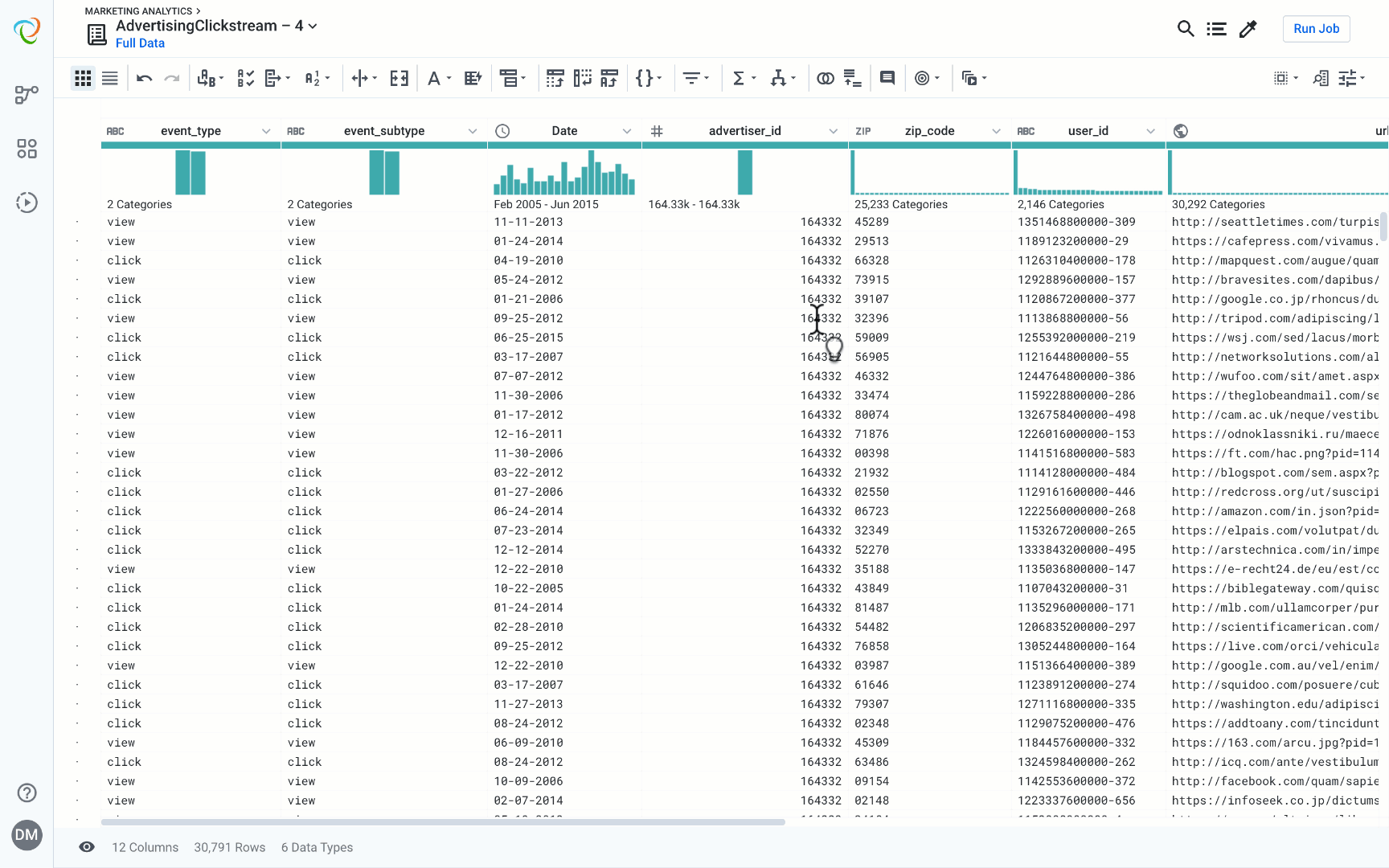
Shaping
Shaping data ensures that all of the columns and rows are optimized for the downstream purpose. This can include pivoting or unpivoting data, filtering to a specific subset, aggregating data, creating new calculated fields, or one-hot encoding categorical columns.
Step 3: Automating
The most important step of the data wrangling process is to automate your work to ensure a steady pipeline of data feeds your downstream analytics or machine learning applications, while continuing to provide data quality checks and validation. Designer Cloud automates complex data engineering tasks and enables increased levels of self-service, helping your organization harness the collective intelligence of teams and make everyone—data analysts, engineers, and scientists alike—a data hero.
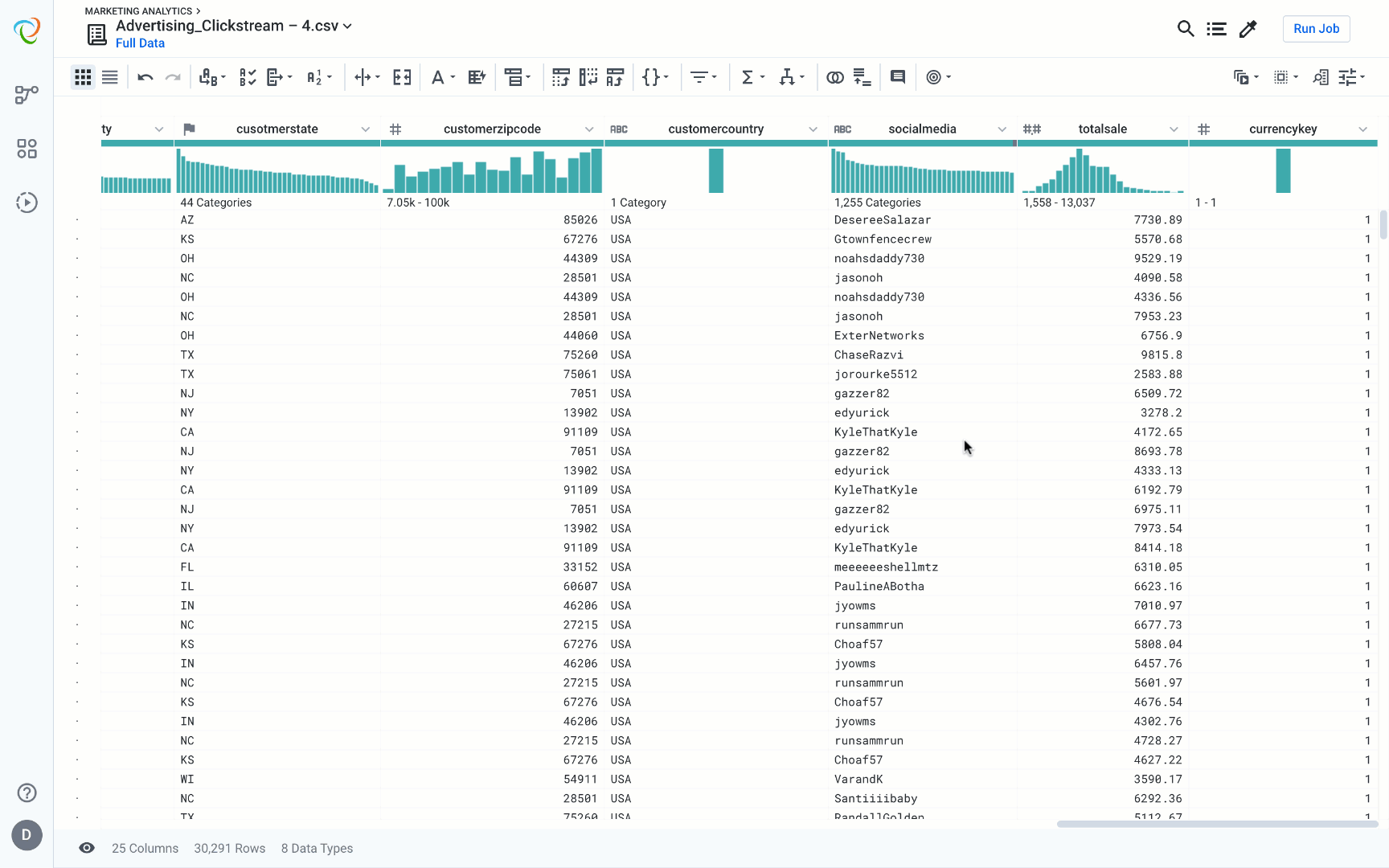
Try Designer Cloud For Yourself
Are you, like Ferris Bueller, ready to stop and look around so you don’t miss out? Trifacta’s data wrangling platform is built for speed, quality, scale, and ease of developing and automating data pipelines to support business intelligence, analytics and AI/ML initiatives across your entire organization. Try Designer Cloud now for free.